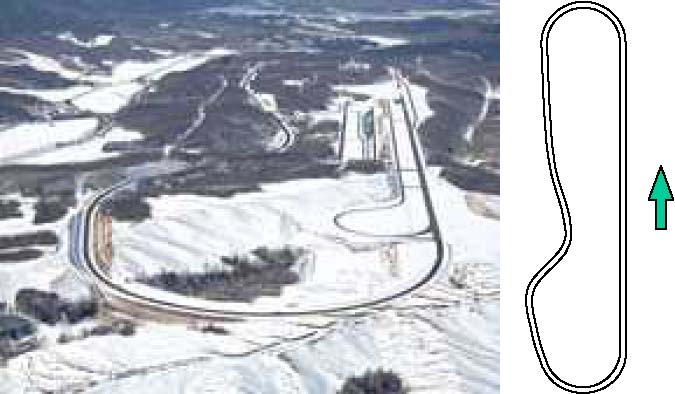Aisin Seki, Japan, has developed an eyelid monitor and identified symptoms in eyelid behaviour that indicate drowsiness in motorists. The new automated ITS (Intelligent Transport System) eliminates the fallibility of human judgement in gauging when drowsiness is becoming a driving hazard. A number of physiological factors can indicate drowsiness, and monitoring eyelid movements is generally less restrictive for the driver. Aisin's eyelid monitor tracks a range of variables such as blink speed and frequency and average eyelid position. Trials of the new technology on motorists driving along a test track confirmed the reliability of using the measured parameters to rate the drowsiness level of the driver. The company has also used its monitoring systems to identify other behavioural symptoms that indicate lapses in driving competency. Eye movement speed and fluctuations in the vergence angle — indicating where the line of sight of right and left eye converge — are both linked to incidents of people deviating off lane and slow driver reaction times in driving simulations. Drowsiness is a serious driving hazard worldwide and ranks as the number one cause of fatal car accidents in Japan. Aisin's quality first corporate principles include a commitment to social contributions. The drowsiness monitoring systems will soon be available in Toyota's cars, providing significant improvements to road safety.

Nine test drivers took part in the evaluation, each accompanied by an observer and an operator. They drove at a constant speed of 60 km/h for 80 minutes or until the observer judged that they were no longer fit to drive. The monitoring equipment retrieves eyelid movement data from video frame images of the driver's face recorded at 30 frames per second while driving. Eight quantities were recorded: average blinking intervals, average eyelid closure duration, maximum eyelid closure duration, blink frequency, average eyelid closure velocity, average eyelid opening velocity, average eyelid position, and integrated eyelid closure duration. These values were then used to identify five levels of drowsiness on a scale of one to five: 1 — not drowsy 2 — a little drowsy 3 — drowsy 4 — considerably drowsy, and 5 — very drowsy. Significant difference statistical analysis confirmed the reliability of the drowsiness monitoring system. A significant difference of 0.1% was found for the recorded quantities. Eye movement Aisin Seki has also identified the link between eye movement and lapses in motorist concentration during driving simulations. They used their specialised eye monitoring equipment to record the movements of left and right eye during driving. Slow fluctuation of the eyes and rapid fluctuation of the vergence angle, which measures the focal point of the line of sight of right and left eye, were both found to precede incidents when the car deviated from its lane or the driver's reaction times were increased. Results Aisin Seki has identified symptoms in eye behaviour that can reliably indicate driver drowsiness before an accident occurs. Due to the standard deviation overlap between the values recorded for eyelid movement quantities at adjacent drowsiness levels, more than one quantity may need to be monitored for reliable results. The company is developing an algorithm with a secured estimate accuracy that combines multiple measured eyelid movement quantities. The drowsiness monitor should prove a valuable asset in the prevention of fatal motoring accidents. Aisen Seki